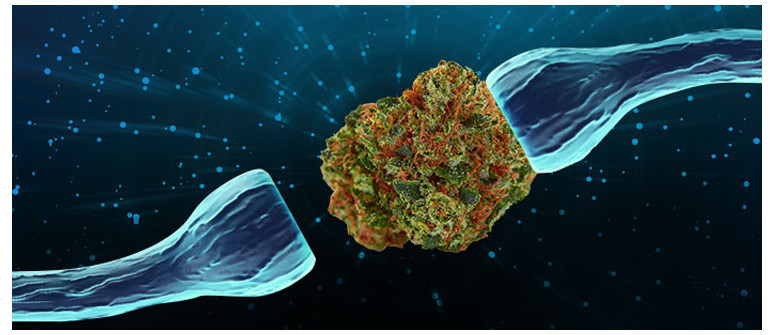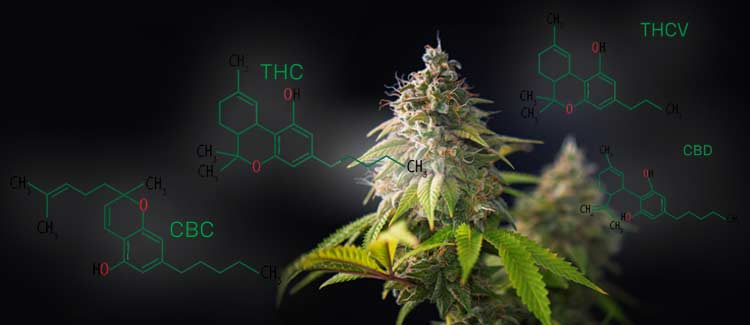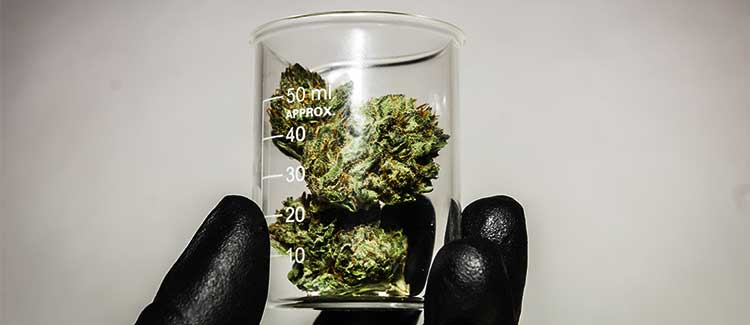What is the entourage effect?

The entourage effect has received much attention in past decade. Find out more about this unique effect, induced by various cannabis compounds.
Altogether, cannabis comprises of at least 400 identified compounds and there are over 110 cannabinoids that have been identified in the cannabis plant. Studies and anecdotal evidence suggest that the interaction between these substances and our endocannabinoid system results in synergistic effects, which is called the “entourage effect”.
Because of this synergy the effects have exhibited greater efficacy in treating medical conditions than isolated cannabis compounds.
For example, THC and CBD work better together than they do when administered individually. They become greater than the sum of their parts. This is simplifying it though, as interactions often involve more than two compounds, and go beyond interaction between just cannabinoids.
SO HOW DOES THE ENTOURAGE EFFECT WORK?

THC was synthesized for the first time by Raphael Mechoulam in 1964 at the Hebrew University in Jerusalem. This led to the discovery of our internal endocannabinoid system, which comprises three main components:
- cannabinoid receptors
- endocannabinoids
- metabolic enzymes
The cannabinoids from cannabis plants, called phytocannabinoids, mimic our internally produced cannabinoids called endocannabinoids. The plant-based phytocannabinoids like THC, CBD, and CBN lock onto the cannabinoid receptors in our body, like CB1 and CB2.
Once these receptors are "unlocked", they send a chemical message telling the body to perform various functions, such as maintaining the body's homeostasis. The metabolic enzymes break down the cannabinoids, thus regulating the endocannabinoid system. So where does the entourage effect step into the picture?
There’s a famous video of a journalist going to a hospital and getting herself injected with pure THC, and comparing the effects to an injection comprising THC mixed with other cannabinoids.
When she received the pure THC she felt horrible, but when she received THC with other cannabinoids she felt great, she was giggling and felt generally uplifted. That's the entourage effect in a nutshell.
In an interview with Canabis Conversations, Dr. Ethan Russo explains how THC and CBD work together and complement each other. The THC binds to the orthosteric site of the cannabinoid receptor, while CBD binds to the allosteric site. When CBD acts on the allosteric site, it changes how THC and endocannabinoids work together with the cannabinoid receptors.
Based on how CBD interferes with the effects of THC, it's generally accepted by scientists like Raphael Mechoulam that CBD can reduce the negative effects of excessive amounts of THC, including rapid heart rate and anxious feelings. There are also suggestions that THC actually improves the medicinal benefits of CBD.
Dr. Ethan Russo also suggests that terpenes further change the functioning of the endocannabinoid system, which adds to the possibilities of the entourage effect.
Terpenes are responsible for the delicious aromas and flavors of cannabis, which have many therapeutic effects in their own right. Cannabis contains terpenes such as Myrcene, Pinene, Limonene, Caryophyllene, Linalool, Terpinolene, Humulene, Pulegone, and many others.
MORE RESEARCH INTO THE ENTOURAGE EFFECT NEEDED

More studies are required in order to target the exact synergies between the endocannabinoid system, phytocannabinoids, and the different terpenes, but nevertheless, anecdotal and scientific evidence suggests that there’s plenty of medicinal value obtained from these synergies.
Today, pharmaceutical companies produce synthetic cannabinoids and cannabis-derived medicines for research and medicinal purposes. Marinol and Cesamet are synthetic cannabinoid medicines mimicking the structure of THC. Epidiolex is a CBD cannabis-derived medicine, used for epilepsy syndromes like the Dravet Syndrome and Lennox-Gastaut syndrome. Sativex is a cannabis-derived medicine which comprises both THC and CBD.
But since the interactions between different cannabinoids and terpenes have proven to manifest unique effects, today’s cannabis pharmaceuticals may be too simplistic for treating various medical conditions. However, there are two sides to consider.
Scientific research requires strictly controlled dosages, which can be precisely reproduced, together with a large number of participants to determine the exact functioning of these controlled compounds.
Since every cannabis strain and every cannabis plant from the same strain comprises a unique chemical profile, a reproducible dosage comprising the exact amount of cannabinoids and terpenes becomes virtually impossible by directly applying the dried marijuana buds. That’s why today's cannabis research mainly uses isolated compounds.
On the other hand, even though the research is moving things forward, it doesn't represent the anecdotal evidence of how cannabis, as a plant, is experienced by us humans, and the functioning of the entourage effect is greatly neglected.
CONCLUSION
We now know that cannabis plants comprise over 400 chemicals that induce different effects not only in an isolated format but in concoction with other cannabis compounds, but research on the entourage effect is in its infancy.
Let’s hope that our society will move forward in supporting scientists to continue researching the interactions between cannabinoids, terpenes, and the endocannabinoid system to help us progress medical science for a brighter future.
.jpg)
.jpg)

.jpg)
